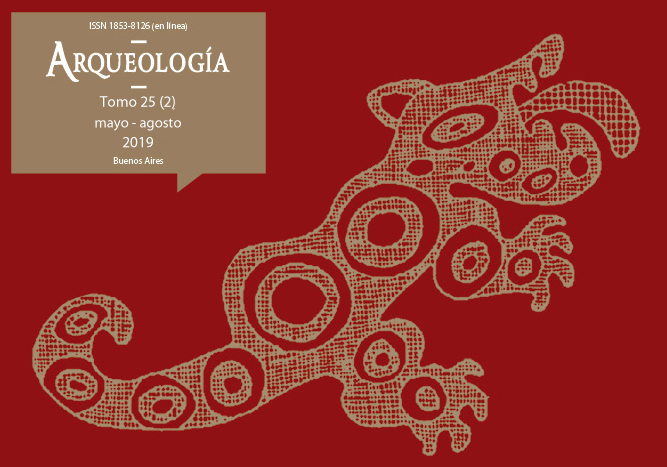Variations and continuities: the use of animal resources during the 20th century among indigenous settlements of central-western Santa Cruz
Keywords:
20th century archaeology, Indigenous groups, Pastoralism, Marginality, Historical silence
Abstract
This article focuses on the resource exploitation strategies used by indigenous family-units that inhabited the Strobel Lake plateau (Santa Cruz province) during the 20th century. The groups that settled in this region avoided being incorporated into the indigenous reservations created by the national state. The family-units adopted varied economic strategies in order to occupy these spaces. These strategies were marked by accommodation and readjustment to the advancing pastoralist economy and the loss of lands. We conclude that the strategies adopted were characterized by diversity and flexibility; combining traditional practices with others linked to the new role that these groups acquired within the new economy. Notwithstanding, the creation of new laws and the progressive encirclement of these local groups led them to abandon their settlements on the plateau.Downloads
Download data is not yet available.
Published
2019-06-01
How to Cite
Agnolin, A. M. (2019). Variations and continuities: the use of animal resources during the 20th century among indigenous settlements of central-western Santa Cruz. Arqueología, 25(2), 117-140. https://doi.org/10.34096/arqueologia.t25.n2.6859
Section
Articles
Copyright (c) 2019 Agustín M. Agnolin

This work is licensed under a Creative Commons Attribution-NonCommercial-ShareAlike 4.0 International License.
Authors who publish in this journal agree to the following conditions:
- Authors retain copyright and yield to the journal right of first publication with the work registered with attribution license Creative Commons, which allows third parties to use the published always mentioning the authorship of the work and first publication in this magazine.
- Authors can make other independent and additional contractual arrangements for the non-exclusive distribution of the version of the article published in this issue (p. Eg., Inclusion in an institutional repository or publish it in a book), provided that clearly indicate that the work was published for the first time in this magazine.
- It allows and encourages the author / s to publish their work online (eg institutional or personal pages) before and during the process of revision and publication, as it can lead to productive exchanges and greater and more rapid dissemination of work published (See The Effect of Open Access).





(1)13.png)






1.jpg)
1.jpg)


13.png)
1.png)


(1)1.png)









